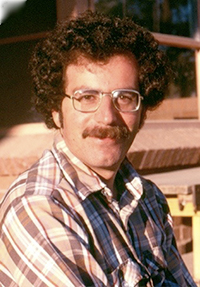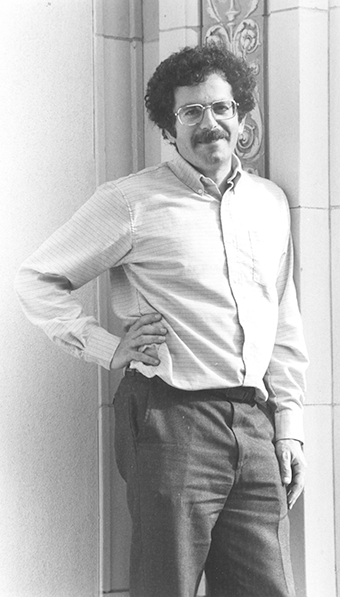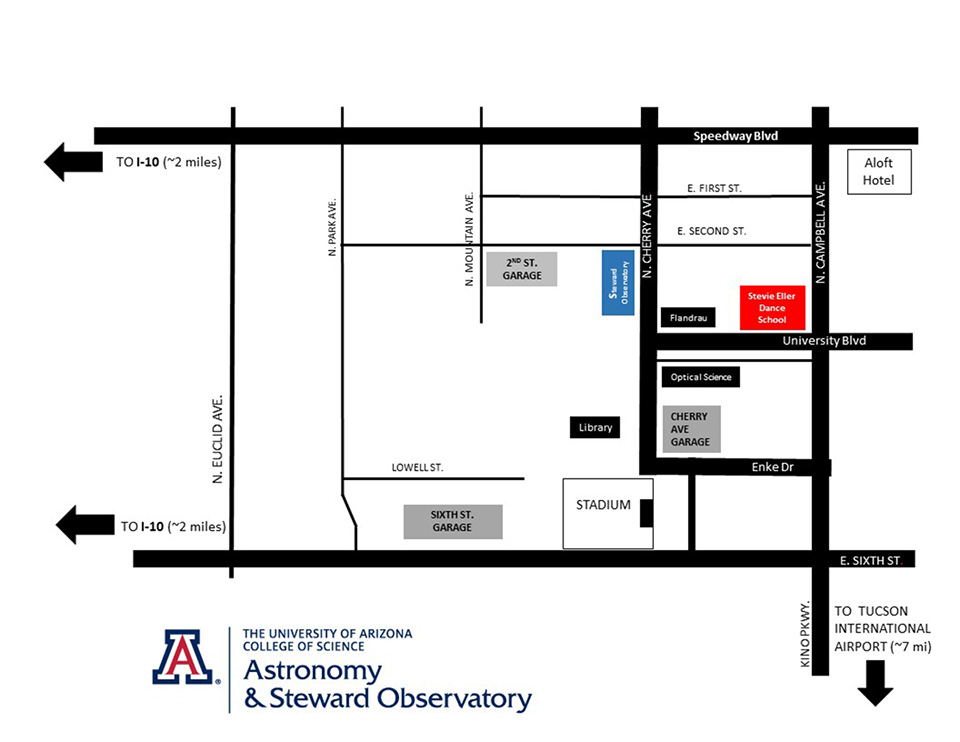| |
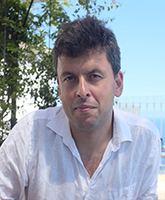 |
Vasily Belokurov
Dr. Vasily Belokurov received his Bachelor's and Master's degrees in Astronomy at Moscow State University, graduating in 1999 with the work "Image Reconstruction for the Einstein Cross (QSO2237+0305) Gravitational Lens." He did his doctoral work at Oxford University, UK, receiving a DPhil in Theoretical Physics in 2003 for the dissertation "Variability in Astrophysical Surveys." He then moved to Cambridge, UK, in 2003 as a postdoctoral researcher,a research fellow, and now as a Reader in Astrophysics at the Institute of Astronomy in Cambridge, UK (equivalent of associate professor with tenure in the USA). Dr Belokurov is cited for a variety of work related to data mining of large surveys: his long-term work on discovery of Milky Way dwarf galaxies, his work on star streams culminating in the Field of Streams, and his work (with students) on the structure and size and density distribution of the Milky Way from BHB stars. He also discovered gravitational lenses in the Cassowary Survey, and discovered metal-poor dwarf irregular galaxies from SDSS imaging. |
| |
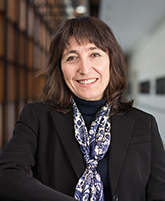 |
Wendy Freedman
Wendy Freedman is the John and Marion Sullivan University Professor of Astronomy and Astrophysics at The University of Chicago. She received her Ph.D. in Astronomy and Astrophysics in 1984 at the University of Toronto. Among Freedman's scientific achievements during her thirty-year career at the Observatories of the Carnegie Institution for Science in Pasadena, she was a principle investigator for a team of astronomers who carried out the Hubble Key Project to measure the current expansion rate of the Universe. As the Crawford H. Greenewalt Director of the Carnegie Observatories (2003-2014), she initiated the Giant Magellan Telescope (GMT) Project and served as its chair from 2003-2015. Freedman is a member of the National Academy of Sciences and American Philosophical Society; and a fellow of the American Academy of Arts and Sciences and American Physical Society. She has received numerous awards and honors for her contributions to observational cosmology. Her current research interests are directed at measuring both the current and past expansion rate of the universe, and in characterizing the nature of dark energy. She is the Principal Investigator of a long-term program with the Hubble and Spitzer Space Telescopes to measure the Hubble constant to an accuracy of 3%. |
| |
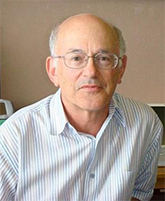 |
Ken Freeman
Ken Freeman is Duffield Professor of Astronomy at the Australian National University in Canberra. He studied mathematics at the University of Western Australia and theoretical astrophysics at the University of Cambridge, followed by a postdoc at the University of Texas with G. de Vaucouleurs and a research fellowship at Trinity College, Cambridge. He returned to Australia in 1967 as a Queen Elizabeth II Fellow at Mt Stromlo Observatory, joined the ANU staff in 1970 and has been there ever since. His research interests are in the formation and dynamics of galaxies and globular clusters, and particularly in the problem of dark matter in galaxies: he was one of the first to point out (1970) that spiral galaxies contain a large fraction of dark matter. His prizes include the Dannie Heineman prize of the American Institute of Physics and the American Astronomical Society for 1999; the Prime Minister's Prize for Science in 2012; the Henry Norris Russell Lecturership (AAS) in 2013; and he shared the international Gruber Prize for Cosmology in 2014. He became a Fellow of the Australian Academy of Science (FAA) in 1981 and a Fellow of the Royal Society of London (FRS) in 1998. |
| |
 |
J. Davy Kirkpatrick
Davy grew up on a dairy and tobacco farm in middle Tennessee where the dark night skies revealed a distant universe that piqued his curiosity. A search of the five astronomy books in his elementary school library revealed one with the title "The Stars" by H. A. Rey., the reading of which left Davy convinced that astronomy was his calling. Some 45 years later, Davy is an expert on low-mass stars and brown dwarfs and is largely responsible for the addition of spectral types L, T, and Y to the century-old OBAFGKM stellar classification system. He is currently employed at the California Institute of Technology as a lead research astronomer at the Infrared Processing and Analysis Center. Davy received a B.S. in Mathematics and Physics/Astronomy at Vanderbilt University in 1986 and a Ph.D. in Astronomy at the University of Arizona in 1992. In addition to the 2010 Aaronson Lectureship, he was also Vanderbilt's Wendell G. Holladay Lecturer in 2011 and a Watkins Visiting Professor at Wichita State University in 2003. |
| |
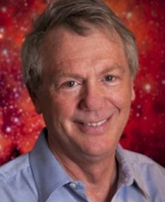 |
Robert Kirshner
Professor Kirshner graduated from Harvard College in 1970 and received a Ph.D. in Astronomy at Caltech. After a postdoc at the Kitt Peak National Observatory, Bob joined the faculty at the University of Michigan. In 1986, he moved to Harvard, serving as Department Chair and becoming Clowes Professor of Science. In 2015, he became Chief Program Officer for Science at the Gordon and Betty Moore Foundation. In 2016 he became Clowes Research Professor of Science at Harvard. A member of the National Academy of Sciences, and the American Philosophical Society, Kirshner was awarded the James Craig Watson Medal by the National Academy in 2014 and the Wolf Prize in Physics in 2015. His graduate students, Adam Riess and UA alumnus Brian Schmidt shared in the 2011 Nobel Prize in Physics for the discovery of cosmic acceleration. |
| |
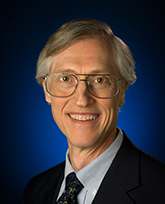 |
John C. Mather
Dr. John C. Mather is a Senior Astrophysicist at NASA's Goddard Space Flight Center in Greenbelt, Maryland, where he specializes in infrared astronomy and cosmology. He received his Bachelor's degree in physics at Swarthmore College and his PhD in physics at the University of California at Berkeley. As an NRC postdoctoral fellow at the Goddard Institute for Space Studies (New York City), he led the proposal efforts for the Cosmic Background Explorer (74-76), and came to GSFC to be the Study Scientist (76-88), Project Scientist (88-98), and the Principal Investigator for the Far IR Absolute Spectrophotometer (FIRAS) on COBE. He and his team showed that the cosmic microwave background radiation has a blackbody spectrum within 50 parts per million, confirming the Big Bang theory to extraordinary accuracy. The COBE team also discovered the cosmic anisotropy (hot and cold spots in the background radiation), now believed to be the primordial seeds that led to the structure of the universe today. It was these findings that led to Dr. Mather receiving the Nobel Prize in 2006. Dr. Mather now serves as Senior Project Scientist (95-present) for the James Webb Space Telescope, the successor to the great Hubble Space Telescope. |
| |
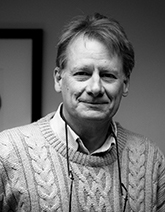 |
Lyman Page
Lyman Page is the Chair and James S. McDonnell Distinguished University Professor of Physics at Princeton University. He received his BA from Bowdoin College in 1978 and his Ph.D. from MIT in 1989. During the five years between college and graduate school he wintered over at McMurdo Station, Antarctica (1979) where he operated a cosmic ray detection station for the Bartol Research Foundation. He also worked on a solar telescope at the South Pole. Then he rebuilt a 37' wooden ketch and sailed about the Caribbean and east coast of the United States. To support himself, he worked as a painter, rigger, and boat carpenter in various ports. In the nine months before graduate school he was a carpenter in Boston. Over the past twenty-five years he has been the PI or Co-I of multiple experiments to measure the CMB temperature anisotropy and polarization. He was a founding member of the WMAP satellite and the founding director of the ACT project. He has won a number of awards in addition to the Marc Aaronson Award, including the Shaw Prize and the Gruber Prize. He is a member of the American Academy of Arts and Sciences and the National Academy of Sciences. |
| |
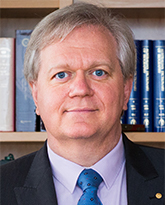 |
Brian P. Schmidt
Professor Brian P. Schmidt was appointed Vice-Chancellor and President of The Australian National University (ANU) in January 2016. Professor Schmidt is the 12th Vice-Chancellor of The Australian National University (ANU). Winner of the 2011 Nobel Prize in Physics, Professor Schmidt was an astrophysicist at the ANU Mount Stromlo Observatory and Research School of Astronomy and Astrophysics before becoming Vice-Chancellor. Professor Schmidt received undergraduate degrees in Astronomy and Physics from the University of Arizona in 1989, and completed his Astronomy Master's degree (1992) and PhD (1993) from Harvard University. Under his leadership, in 1998, the High-Z Supernova Search team made the startling discovery that the expansion rate of the Universe is accelerating. Fellow of the Australian Academy of Science, The United States Academy of Science, and the Royal Society, he was made a Companion of the Order of Australia in 2013. |
| |
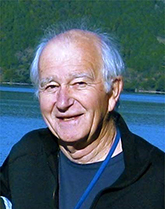 |
Nick Scoville
Scoville has extensive observational and theoretical background in the astrophysics of the interstellar medium, especially molecular clouds and their associated star formation activities, galactic structure and evolution of galaxies and large scale structure at high redshift. In recent years, he has led the Cosmic Evolution Survey (COSMOS) -- the largest survey of evolution at high redshift using observations from all large space and ground based observatories. His publication list includes over 600 publications and he has served on many national committees. He is currently leading four ALMA projects related to local ULIRGS and ISM contents of high z galaxies. In 2015 he was the Jansky Lecturer at NRAO. |
| |
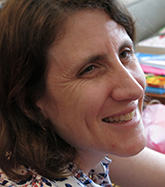 |
Alice Shapley
Alice received her AB from Harvard-Radcliffe University in 1997, and her PhD from the California Institute of Technology in 2003. She was a Miller Fellow at the University of California, Berkeley, from 2003-2005 before joining the faculty of the Department of Astrophysical Sciences at Princeton University as an assistant professor in 2005. In 2007, Alice accepted a faculty position at the University of California, Los Angeles in the Department of Physics and Astronomy, where she is currently a full professor. She received both Sloan and Packard Foundation Fellowships in 2006, and was honored as the 2014 Aaronson Memorial Lecturer at the University of Arizona. Alice uses both large ground-based telescopes and space-based facilities to collect optical and infrared images and spectra of distant galaxies observed in the early universe, in order to understand galaxy formation and evolution. With her collaborators at the University of California, she recently completed a large survey of the high-redshift universe using the MOSFIRE instrument on the Keck I telescope, in order to measure the physical properties of distant galaxies. |
| |
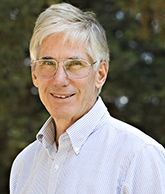 |
J. Anthony Tyson
Tony Tyson is the Chief Scientist of the Large Synoptic Survey Telescope. His research interests are in cosmology, dark matter, dark energy, observational optical astronomy, experimental gravitational physics, and new instrumentation. He has been a Distinguished Professor of Physics at UC Davis since 2003. He received his Ph.D. degree from University of Wisconsin in 1967 and was a Member of the Technical Staff at Bell Laboratories from 1969 to 2003. Dr Tyson is well known for being one of the first to use CCDs to make astronomical observations, for discovering a new class of distant galaxies, for techniques to image the faintest galaxies from the ground, and for mapping dark matter by exploiting weak gravitational lensing. Honors: member American Philosophical Society, member National Academy of Sciences, Aaronson Memorial Prize, Fellow, American Academy of Arts and Sciences, and Fellow, American Physical Society. |
| |
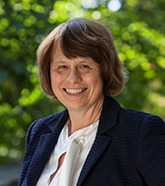 |
Ewine F. van Dishoeck
Ewine F. van Dishoeck is a professor of molecular astrophysics at Leiden University, the Netherlands, and external scientific member of the Max Planck Institute for Extraterrestrial Physics in Garching. She graduated at Leiden University, and held positions at Harvard, Princeton and Caltech from 1984-1990. The research of her group is at the boundary of astronomy and chemistry and uses ground- and space-based observatories to study the molecular trail from interstellar clouds to planet-forming disks. She holds many national and international science policy functions, including scientific director of the Netherlands Research School for Astronomy (NOVA), president-elect of the International Astronomical Union, co-PI of the JWST-MIRI instrument, and (former) ALMA Board member. She has been fortunate to receive many awards, including the Dutch Spinoza award and the Dutch Academy Prize. She is a Member of the Dutch Royal Academy of Sciences and the German Leopoldina Academy, and Foreign Associate of the US National Academy of Sciences and of the American Academy of Arts and Sciences. |
| |
 |
Pieter van Dokkum
Peter van Dokkum is the Sol Goldman Family Professor of Astronomy at Yale University. He received his PhD from the University of Groningen in 1999. He was a Hubble Postdoctoral Fellow and then a Spitzer Postdoctoral Fellow at the California Institute of Technology from 1999-2003. He then moved to Yale University, where he served as Chair of the Yale Astronomy Department from 2011 to 2016. Professor van Dokkum studies the formation and evolution of galaxies using the world's premier facilities, including the Keck Telescopes in Hawaii and the Hubble Space Telescope. He is co-lead of the Dragonfly Telephoto Array, an innovative telescope that has uncovered a previously unknown population of diffuse, dark matter dominated galaxies. Inspiration for the telescope came from insect photography; in 2015 van Dokkum published a book of dragonfly photographs with Yale University Press. |
| |
